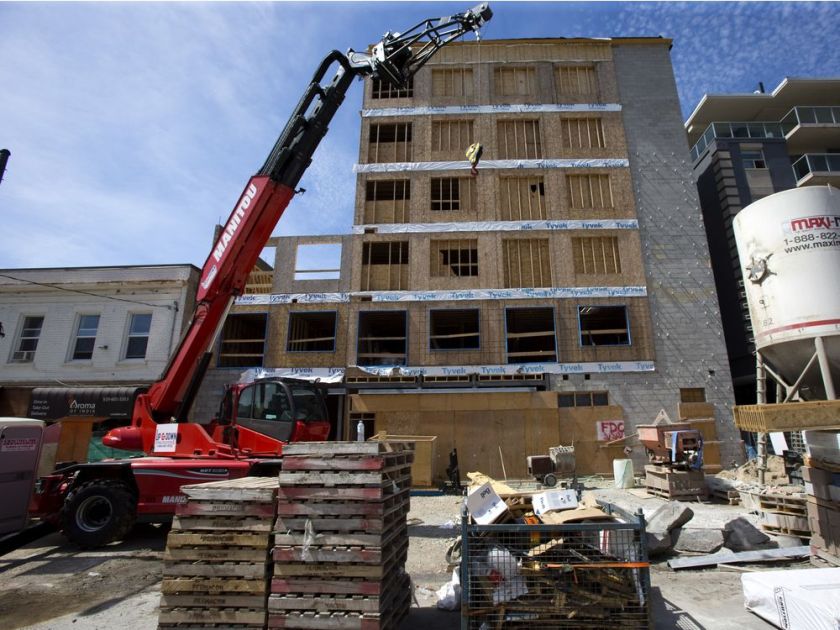The building may only be half-finished — but its progress represents a step toward tackling London’s growing affordable housing crisis.
A tour of 356 Dundas St. by local dignitaries and a news conference Wednesday marked the formal announcement of $4.9 million in federal funding for the new mid-rise. The project is a sign of what can happen under new regulations to help build more units.
Both the province, the municipal government and the community have helped make it happen. The building, an infill project tucked between two hotels in the city’s core, will boast 69 units, all of which will have rents that are at or lower than 30 per cent of the median household income in the area.
Seventeen per cent of the units at the property, located just east of the Dundas-Waterloo Street intersection, will be accessible.
The bricks and mortar – the only wooden frame six-storey building in the city – will be impressive. But more importantly, its financing gives hope that there will be more projects like it.
Seventeen per cent of the units at the property, located just east of the Dundas-Waterloo Street intersection, will be accessible.
The bricks and mortar – the only wooden frame six-storey building in the city – will be impressive. But more importantly, its financing gives hope that there will be more projects like it.
“It takes the burden away from the developers at early days of construction to make sure that they don’t have to worry about how the funding is going to flow over time.”
This isn’t just for affordable housing developers but any developer who meets the criteria. That is good news for London, said Stephen Giustizia, chief executive officer of the London Housing Development Corporation.
“When you meet those criteria, the intent is getting more stock into the market at that middle rate,” he said.
CMHC estimates that no more than 30 per cent of income should go to shelter costs. For low-income earners, the ratio is making it more difficult to find a place to live.
As an example, Giustizia suggested someone in the service industry making about $16 an hour would earn about $33,000 a year. “People in that service industry are looking for units right around that $800 mark,” he said — but there is no inventory.
The average one-bedroom unit – and there are few – run at about $1,000 to $1,100 a month.
Rents are rising because of Toronto influences and a red-hot housing market. Meanwhile there is a strong service industry workforce in need of cheaper housing.
The building has had help from what Binder called “a strong partnership” of funding and the new model.
There has been more political will behind affordable housing and more projects have been approved in the city at the east end of Dundas Street and on Hamilton Road.
Affordable housing was a hot-button issue during the last municipal election and there is a growing consensus that there is a dire need for new options.

